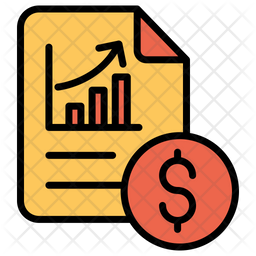
Blockchain Market: by Type (Public, Private, and Hybrid) by Application (Payments, Exchanges, Documentation, Supply Chain Management, Digital Identity, and Others) by Organization Size (SMEs, and Large Enterprises) by Vertical (Government, BFSI, Retail and e-Commerce, Healthcare and Life Sciences, Transportation and Logistics, and Others)-Global Industry Analytics, COVID-19 Business Impact, and Trends, 2020 – 2029.
- TBI508591
- July 24, 2020
- Global
- 132 pages
- SAC Insights
Abstract
According to the report, global demand for blockchain market was valued at USD 1.4 Billion in 2018, and is expected to reach USD 53.5 Billion in 2025, growing at a rate of 53.7% between 2019 and 2025.
Blockchain is a technology that consists of a growing list of records of transactions made in cryptocurrency. Data is added to blocks that are connected, thus creating a chain of blocks linked together.
The blockchain market is expected to grow at a significant rate over the forecast period owing to the rising investment in blockchain technology and venture capital funding. It is used for smart contracts, payments, compliance management, digital identity risk and many more. Early adoption of blockchain was made by Bitcoin in 2009. Apart from financial services, industries such as healthcare, transportation, BFSI, the government are using blockchain to manage their information.
Rising need for faster transactions, increasing demand for simplified business processes is driving the market. Further, growing adoption of blockchain as service, increased transaction management efficiency, change in international trade, digitalization across various industry sectors, and transparency of information are fueling the market growth. However, high initial investments and security issues are anticipated being major drawbacks for the market development during the forecast timespan.
The blockchain market is bifurcated on the basis of type, application, organization size, vertical, and region. Based on type, the market is further segmented into the public, private, and hybrid blockchain. Hybrid segment is projected to grow at a considerable rate as it offers common features of private and public blockchain solutions. It offers privacy as it is not accessible to everyone. The hybrid solution offers features such as transparency, integrity, and security. Based on the application, the blockchain market is divided into payments, exchanges, documentation, supply chain management, digital identity, and others.
Based on organization size, the market is further bifurcated into SMEs and large enterprises. The SMEs segment is anticipated to witness significant growth due to the advantage of blockchain technology, such as automating payroll, inventory, invoicing and other business processes. Furthermore, blockchain technology helps SME’s to streamline operations at a faster rate and cost-effectively.
Based on the region, the blockchain market is segmented into Europe, North America, Latin America, Asia Pacific, and the Middle East and Africa. North America region is anticipated to hold a substantial share of the global blockchain market over the forecast period. This share is due to the increasing investment in the development of blockchain technology, increasing acceptance of blockchain technologies in various industries such as in retail, real estate, IT and Telecommunication, and transportation and logistics among others. Asia Pacific is anticipated to witness a notable rise in the blockchain market over the estimated timespan owing to the growth and development of financial sector in this region. Rapid development of economies such as China and India are projected to fuel the demand for blockchain market.
Noticeable players in blockchain market include IBM Corporation, Microsoft Corporation, SAP SE, Oracle Corporation, Amazon Web Services, Inc., Digital Asset Holdings LLC, Consensus Systems (ConsenSys), Huawei Technologies Co., Ltd., R3, and Ripple among others.
The report segment of global blockchain market as follows:
Global Blockchain Market: Type Segment Analysis
Public blockchain
Private blockchain
Hybrid blockchain
Global Blockchain Market: Application Segment Analysis
Payments
Exchanges
Documentation
Supply Chain Management
Digital Identity
Others
Global Blockchain Market: Organization Size Segment Analysis
SMEs
Large Enterprises
Global Blockchain Market: Vertical Segment Analysis
Government
BFSI
Retail and e-Commerce
Healthcare and Life Sciences
Transportation and Logistics
Others
Global Blockchain Market: Regional Segment Analysis
U.S.
Europe
UK
France
Germany
Asia Pacific
China
Japan
India
Latin America
Brazil
Middle East and Africa
Table of Contents
Request Table Of Content
Click To Request Sample
Chapter 1. Preface
1.1. Report Description and Scope
1.2. Research Scope
1.3. Research Methodology
1.3.1. Market Research Process
1.3.2. Market Research Methodology
Chapter 2. Executive Summary
2.1. Blockchain Market, 2016-2025 (USD Billion)
2.2. Blockchain Market: Snapshot
Chapter 3. Blockchain Market- Industry Analysis
3.
| read more...



















